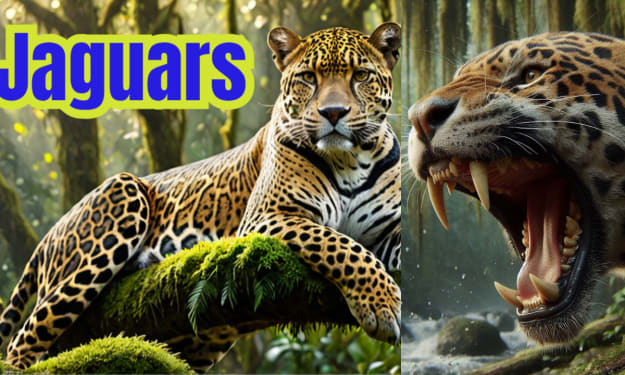Journey Through the Permian Earth's Ancient Chronicles and the Great Death
Exploring the rise of ancient beast and the catastrophic extinction that shaped our planet

Millions of years ago, Earth looked vastly different. All the continents were fused into one, teeming with both beautiful and terrifying life. Prehistoric times often bring to mind images of T-Rexes rampaging through jungles with razor-sharp teeth, but even before the dinosaurs, other giant creatures ruled the Earth. Welcome to the Permian period, an epic era that began 300 million years ago.
At that time, Earth had a supercontinent called Pangea, surrounded by a world ocean called Panthalassa. The Permian period commenced after an ice age when temperatures were much cooler than today. During the early Permian days, Earth warmed, creating a lush environment with diverse plants and the rapid evolution of insect and animal life. Everything on our Blue Marble is ever-changing, and over the next 50 million years, Earth grew hotter and drier.
Unfortunately, the most deadly event in Earth's history occurred, wiping out nearly everything that had lived. Scientists refer to this event as the Great Dying, the most catastrophic mass extinction in Earth's history. Before we delve into this grim topic, let's take an epic journey back in time to the Permian period, where some incredible species roamed our young planet.
If you could time travel nearly 300 million years into the past, you'd land in the middle of the supercontinent Pangea. Earth's smaller continents had just collided to form this enormous landmass, occupying one-third of the planet's surface. There was likely less oxygen in the air than today, and it might be a bit chilly, with some areas averaging no more than a brisk four degrees Celsius. But don't worry; things would soon heat up.
By the end of the early Permian, the Ice Age was waning, and Pangea was becoming a lush world. Volcanic activity changed the climate, shaped the landscape, and paved the way for evolution. The very first seed-bearing plants called gymnosperms emerged around 290 million years ago. These plants carried seeds on their cones and spread across the supercontinent like wildfire.
In the ancient evergreen forests of the early Permian, you'd find familiar creatures like cicadas, beetles, and, yes, cockroaches. However, these weren't the small cockroaches we know today; these prehistoric vermin were gigantic, the size of birds. Fortunately, cockroaches never ruled the prehistoric land. Something much more fascinating was roaming Pangea – the now-extinct ancestor of primitive mammals, Dimetrodon.
Dimetrodon was an incredible and terrifying creature. It grew up to five meters long, weighing 225 kilograms, with a large sail running down its spine. This sail likely helped it regulate body temperature, soaking up warmth during the daytime and dissipating excess heat during cooler nights. It would have been a menacing sight, a true apex predator of its time with sharp and flat teeth.
As the middle Permian period progressed, other mammal-like reptiles known as "therapsids" began to dominate the planet. These reptiles had strong jaws with sharp teeth and a somewhat upright stance thanks to their legs being situated underneath their bodies. A variety of therapsids roamed the Earth, from the omnivorous Deuterosaurus to the smaller, meat-eating Lycanops.
If you continued your journey through the Permian period, you'd witness Earth getting hotter. The average global temperature on Pangea grew to about 25 degrees Celsius, and volcanoes were releasing greenhouse gases into the atmosphere. Sea levels shifted, but marine life found ways to adapt and thrive.
In the late Permian period, you might encounter the friendly herbivore Listrosaurus. This creature looked like a cross between a lizard and a pig, about one meter long, and used its powerful front legs for burrowing. Another cute mammal-like lizard, the Synodont, evolved. It resembled a giant rodent, was about one meter long, had whiskers, and fed on small animals and insects.
However, during this time, something ominous was happening in the air. Extensive volcanic activity was displacing oxygen from the atmosphere, leaving as little as 10 percent oxygen, compared to today's 21 percent. Breathing in such an environment would be challenging, and temperatures continued to rise, reaching an average of about 28 degrees Celsius. This lush prehistoric world was turning into an oven.
All good things must come to an end, and sadly, the Permian period concluded in a particularly brutal fashion about 252 million years ago. Approximately 90 percent of all plant and animal life was wiped out in this tragic event, known as the Great Dying. It remains Earth's most devastating mass extinction event. The causes of this catastrophe are still debated among scientists, with many theories pointing to explosive volcanic activity.
Massive volcanic eruptions released enormous amounts of ash into the atmosphere, blocking out most, if not all, incoming sunlight. Without sunlight, global temperatures dropped suddenly, plants couldn't perform photosynthesis, and the food chain collapsed. Animals soon followed suit, and the situation worsened as carbon dioxide emissions from the eruptions caused temperatures to rise dramatically. The superocean lost most of its oxygen, leading to the demise of a vast majority of Permian sea animals.
In the end, over 95 percent of marine species and more than 70 percent of land animals went extinct. This mass extinction event is a somber reminder of the Earth's complex history. It's tempting to wish to bring back all the animals that have ever gone away, including dinosaurs, but that's a story for another "what if."






Comments
There are no comments for this story
Be the first to respond and start the conversation.